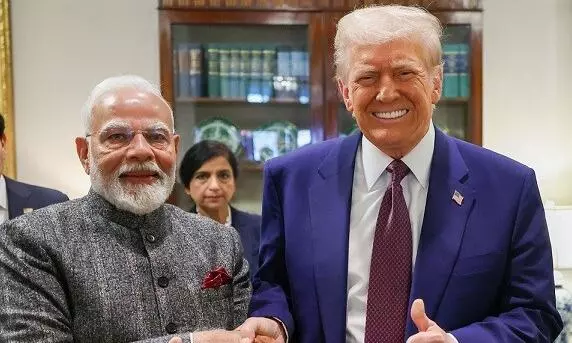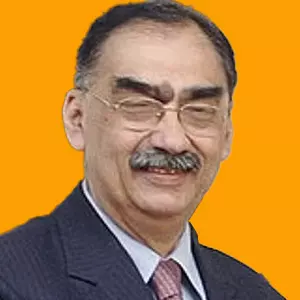
- Home
- India
- World
- Premium
- THE FEDERAL SPECIAL
- Analysis
- States
- Perspective
- Videos
- Sports
- Education
- Entertainment
- Elections
- Features
- Health
- Business
- Series
- In memoriam: Sheikh Mujibur Rahman
- Bishnoi's Men
- NEET TANGLE
- Economy Series
- Earth Day
- Kashmir’s Frozen Turbulence
- India@75
- The legend of Ramjanmabhoomi
- Liberalisation@30
- How to tame a dragon
- Celebrating biodiversity
- Farm Matters
- 50 days of solitude
- Bringing Migrants Home
- Budget 2020
- Jharkhand Votes
- The Federal Investigates
- The Federal Impact
- Vanishing Sand
- Gandhi @ 150
- Andhra Today
- Field report
- Operation Gulmarg
- Pandemic @1 Mn in India
- The Federal Year-End
- The Zero Year
- Science
- Brand studio
- Newsletter
- Elections 2024
- Events
- Home
- IndiaIndia
- World
- Analysis
- StatesStates
- PerspectivePerspective
- VideosVideos
- Sports
- Education
- Entertainment
- ElectionsElections
- Features
- Health
- BusinessBusiness
- Premium
- Loading...
Premium - Events

With the mercurial US president making remarks on tariff that would put New Delhi in a spot of bother, it is to be seen how the Indian government responds
On July 30, US President Donald Trump made a series of remarks related to trade negotiations that are currently underway between his country and India.
On his social media site Truth Social, he wrote, “Remember, while India is our friend, we have, over the years, done relatively little business with them because their Tariffs are far too high, among the highest in the World, and they have the most strenuous and obnoxious non-monetary Trade Barriers of any Country. Also, they have always bought a vast majority of their military equipment from Russia, and are Russia’s largest buyer of ENERGY, along with China, at a time when everyone wants Russia to STOP THE KILLING IN UKRAINE — ALL THINGS NOT GOOD! INDIA WILL THEREFORE BE PAYING A TARIFF OF 25%, PLUS A PENALTY FOR THE ABOVE, STARTING ON AUGUST FIRST. THANK YOU FOR YOUR ATTENTION TO THIS MATTER. MAGA”.
Also read: US announces 25% tariff plus penalty on India; govt says it's studying implications
He soon followed this long post with a shorter one on Truth Social. In that he stated, “WE HAVE A MASSIVE TRADE DEFICIT WITH INDIA”!!!
Trump slams BRICS
In an exchange with the media, he gave this response when asked about his morning Truth Social posts on imposing tariffs against Indian exports to the US: “We are negotiating right now. But it is also BRICS. BRICS is basically a group of countries that is anti-United States. India is a member of that, if you can believe it. It’s an attack on the dollar and we cannot let anybody attack the dollar. So, that it is partially BRICS and partially the trade situation. We have tremendous deficit. As you know PM Modi is a friend of mine but they don’t do very much in terms of business with us.
Also read: US President Trump slaps 25 pc tariff plus penalty on India: What next?
“They sell a lot to us but we don’t buy from them (sic). You know why because the tariff is so high. They have one of the highest tariffs in the world. But now they are willing to cut it very substantially but we will see what happens. Because we are talking to India now, we will see what happens. It doesn’t matter very much whether we have a deal if we charge them a certain tariff. But you will know at the end of the week.”
Later, Trump was asked again by the media about his posts. He responded: “We are talking to them and we will see what happens. And again, India was the highest or one of the highest tariff nations in the world—100 points or 150 points or percentages. So, India was one of the highest in the world. They had 175 or higher than this. We are negotiating with India and the world.”
Also read: Why India should stand up to Trump, emerge a better economy
Significantly, while leaving the media conference, he was asked about US-China trade negotiations. Trump said, “We will have a very fair deal with them”.
An analysis of Trump’s remarks gives the clear impression that their purpose was to heighten the level of pressure on India. He has taken the position that it does not matter if there is a deal or not because greater US tariffs will take care of the American interests.
Trump piles pressure on India
However, the fact is that he wants a deal on his terms and that is why he has brought in political factors to put more pressure on India. On BRICS, the US had earlier taken the position that it would not allow the group to weaken the position of the dollar as the world’s reserve currency.
But Trump’s comment that BRICS was hostile towards the US has perhaps never been so stated at the level of the US President. This could be problematic for India because it is committed to BRICS and is a founding member of the group which is now expanding. It is perhaps because it is growing that the US has changed its perception towards it.
Also read: Trump signs oil deal with Pakistan, says ‘they may sell to India some day’
It is also no secret that the US and European countries have been unhappy about India increasing its purchases of energy from Russia.
Trump's frustration with Russia hurting India?
However, Trump had hoped that Russian President Vladimir Putin would heed his call to end his invasion of Ukraine. Putin has not shown any inclination of this kind. Consequently, Trump is very unhappy with Putin and has talked about imposing new sanctions against Russia.
India’s purchase of Russian energy has come under his radar because of Putin’s firm approach on the Ukraine war. So, essentially, he wants to cut off Putin’s sources of revenues. Till now, India has taken the view that it is in its national interest to buy energy from any source which is to its advantage.
Also read: Rahul Gandhi says Trump right on making 'dead economy' remark about India
Besides, it has pointed out that some European countries continued to do so till they needed Russian energy even after Russia invaded Ukraine in February 2022. Trump has threatened to put penalties on India, in addition to increased tariffs, if it continues to buy Russian energy.
Trump has put Modi in a spot because of this threat. The latter will not find it easy to find a way through this difficulty. Some people wonder if it is right for Trump to mix business and geopolitical factors. All countries do so to achieve their national interests. India’s ancient texts have also spoken of countries using ‘Saam, Daam, Dand, Bhed’ to achieve their objectives. That is the approach that Trump is taking.
Friendship and business not same
Trump has also called Modi his good friend. At the same time, he has made it clear that “dosti dosti hai aur dhanda, dhanda hai” (friendship is friendship, business is business). Modi has always placed a great deal of importance on personal relations and personal chemistry in inter-state relations. The way Chinese President Xi Jinping has conducted himself towards India and Modi despite the Indian prime minister extending special gestures of friendship towards him and now the attitude of Trump show that ultimately nations base their policies not on the personal ties of their leaders but on their national interests.
Besides, as far as Trump’s approach is concerned, Modi, who comes from India’s leading commercial state, Gujarat, would perhaps have no problems in agreeing with Trump that "dosti, dosti hai aur dhanda, dhanda hai".
What India has said
India has issued a measured statement against Trump’s posts. (His comments to the media came later). The Ministry of Commerce and Industry issued a statement on July 30 evening.
It stated: “The government has taken note of a statement by the US President on bilateral trade. The Government is studying its implications. India and the US have been engaged in negotiations on concluding a fair, balanced and mutually beneficial bilateral trade agreement over the last few months. We remain committed to that objective.
“The government attaches the utmost importance to protecting and promoting the welfare of our farmers, entrepreneurs, and MSMEs.
“The government will take all steps necessary to secure our national interest, as has been the case with other trade agreements including the latest Comprehensive Economic and Trade Agreement with the UK.”
The price Modi has to pay
It is futile for the government to draw attention to the India-UK Free Trade Agreement because the UK does not have a leader like Trump who is determined to adopt any step to get his way. Trump has indicated that India has decided to reduce tariffs, so that is not a problem in reaching a US-India trade deal. The sticking point is clearly Trump’s insistence that India should open up agriculture and the dairy sectors. Modi can only do so through paying an unsustainable political price.
Will that influence Trump? It is unlikely because Trump also has a constituency which he has to satisfy. Modi is aware that increased tariffs will mean harm to India’s ambitions to become a real centre for the manufacture and export of mobile phones and semi-conductors and other frontier technology products. But that is a price that he may have to pay for political reasons, among others.
Trump is also aware that Modi cannot go away from the US geo-political camp in the looming China-US global contest. Modi’s space for manoeuvre is therefore limited. He has to go with the US in respect of the Indo-Pacific.
The Pakistan factor
What will hurt Modi most is Trump’s seeking to boost Pakistan. This was seen in the unprecedented lunch that he hosted for Field Marshal Asim Munir. But it has been witnessed more meaningfully in Trump’s announcement on July 30 on Truth Social: “We have just concluded a Deal with the Country of Pakistan, whereby Pakistan and the United State will work together on developing their massive Oil Reserves. We are in the process of choosing the Oil Company that will lead this Partnership. Who knows, maybe they’ll be selling Oil to India someday!”
This has big implications for India in every way, including in the areas of geo-politics and geo-economics.
How will Modi and the great supporter of more intense India-US ties, External Affairs Minister S Jaishankar, respond to the new challenge that is emerging from the US? Only time will tell.
One last point: Trump is so mercurial that he can extend the deadline of August 1 for increasing tariffs for India. But it seems unlikely.
(The Federal seeks to present views and opinions from all sides of the spectrum. The information, ideas or opinions in the article are of the author and do not necessarily the views of The Federal.)


